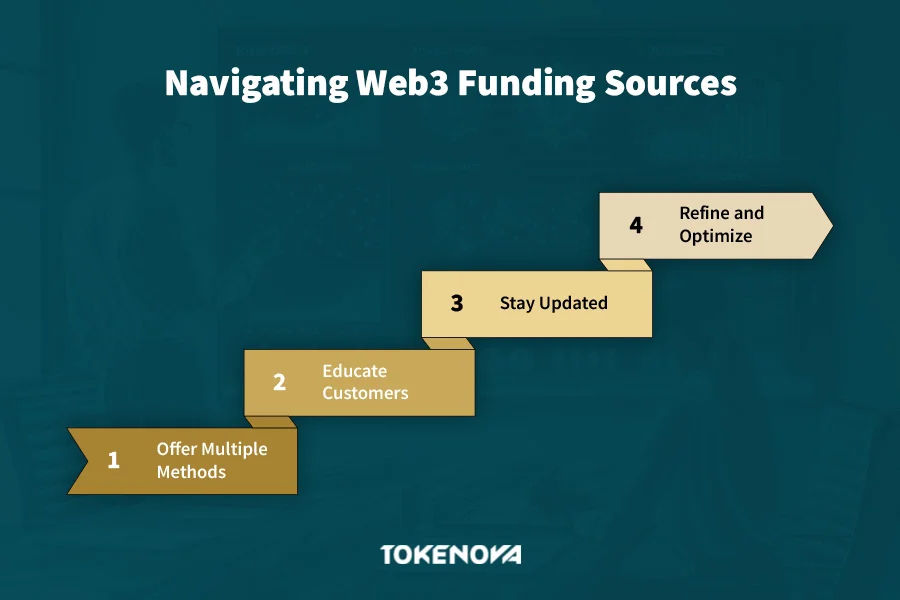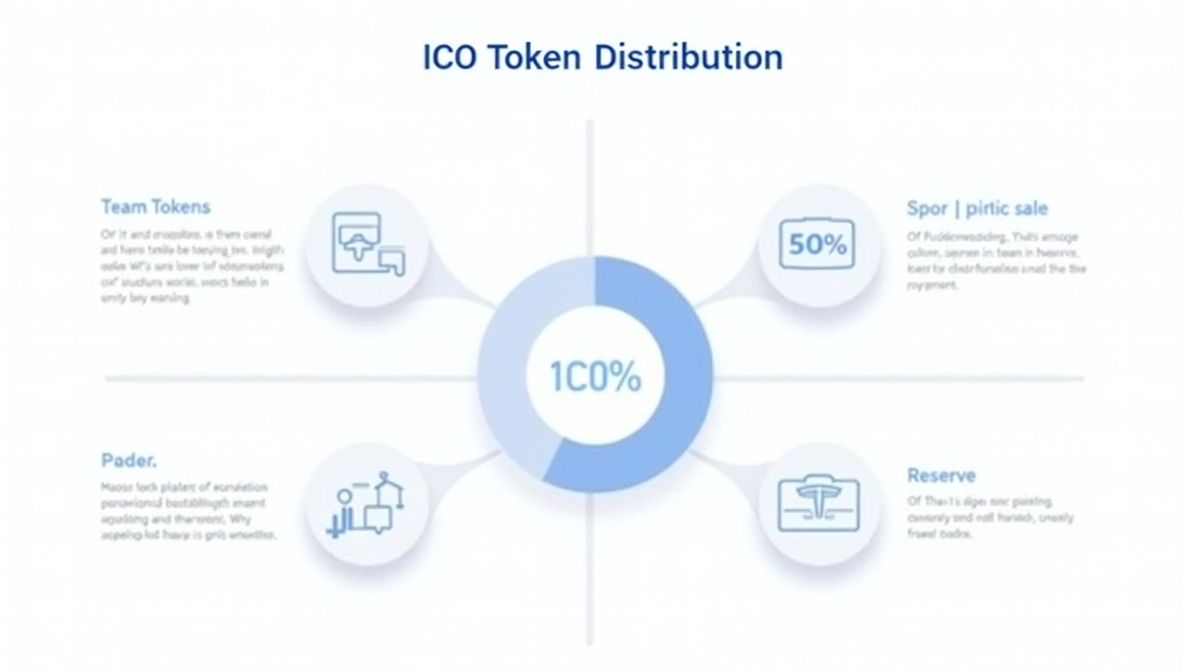Wondering how to integrate crypto payments on website platforms without overwhelming your current operations? As more buyers look for flexible and global transaction methods, digital currencies offer a powerful solution. Accepting cryptocurrencies can expand your market reach, lower fees, and showcase your brand as forward-thinking. But the process may feel daunting if you’re new to blockchain technology. This guide explores proven methods to help you add crypto payment functionality with minimal friction. You’ll also discover how to add crypto payments to website frameworks in a way that enhances customer trust and simplifies day-to-day management. By the end, you’ll have a clear roadmap to future-proofing your payment options.
Why Accept Cryptocurrency Payments?

Embracing cryptocurrency on your website is more than a passing trend. This section explores the main advantages of incorporating digital currency transactions and how they can accelerate your business’s growth trajectory.
Lower Fees and Global Reach
Traditional payment processors often take a significant percentage—sometimes 2–4%—for each transaction. By contrast, cryptocurrencies can carry minimal fees, often under 1% when using specialized gateways. Some digital currencies, such as Stellar (XLM), feature almost negligible transaction costs. This can directly increase profits or allow you to offer more competitive prices. Since crypto transactions transcend borders, you also sidestep international bank surcharges and currency conversion headaches. Settling cross-border payments quickly can broaden your customer base and streamline your global operations.
Enhanced Security and Fraud Prevention
Many website owners grapple with chargebacks and fraudulent transactions. Blockchain’s decentralized ledger eliminates this risk because each transfer is cryptographically verified and permanently recorded. Reputable payment processors like BitPay or CoinGate secure transactions so you no longer need to worry about expensive reversals. Additionally, advanced encryption methods provide an extra layer of protection, reducing fraud and giving your customers confidence during checkout. This is a vital reason many e-commerce platforms are discovering how to add crypto payments to website infrastructures.
Read More: Tokenization in E-commerce
Appeal to Tech-Savvy Consumers
According to multiple reports, over 400 million individuals worldwide hold at least one form of cryptocurrency. Many actively seek out merchants who let them spend these digital assets. Catering to this growing audience can set you apart from competitors restricted to conventional payment methods. Younger demographics in particular appreciate businesses that embrace innovation, and their loyalty often translates into repeat purchases. By offering a quick, transparent, and modern way to pay, you align with these forward-thinking customers and tap into a market segment that continues to expand annually.
Brand Innovation and Image
Presenting yourself as an early adopter of new technology boosts your brand reputation. Mainstream media frequently spotlights businesses that start accepting cryptocurrency, generating earned media coverage and organic buzz. Internally, exploring how to integrate crypto payments on website setups can spark additional innovation, such as launching loyalty tokens or exclusive deals for customers who pay in digital currencies. Over time, these experiments can evolve into unique selling points that distinguish your brand from less adaptable competitors. Whether you operate a local boutique or a global enterprise, showcasing digital currency acceptance positions you as a forward-thinking leader in your field.
Read More: Unlock Your Web3 Brand Strategy: A Comprehensive Guide
Common Methods of Integration
There are several practical ways to include cryptocurrencies in your existing payment ecosystem. Before you jump in, it’s vital to understand which approach aligns with your technical resources and long-term objectives.
Using a Crypto Payment Gateway
A popular solution for those learning how to integrate crypto payments on website infrastructures is to employ a dedicated payment gateway. These third-party services—like NOWPayments, CoinPayments, or BitPay—handle the bulk of technical complexity on your behalf. They provide user-friendly dashboards, streamlined checkout experiences, and the option to settle funds directly in fiat currencies if you want to dodge volatility. Installation can be as simple as adding a plugin to WooCommerce, Shopify, or Magento. However, transaction fees may apply (typically around 0.5–1%), and you have limited control over the user interface.
Direct API Integration
If you prefer granular control over how payments are processed, direct API integration could be the right choice. Providers like BTCPay Server or BitPay’s developer tools allow you to build custom payment modules that plug seamlessly into your platform. You’ll likely need coding knowledge—or a development team—since you have to manage server security, payment confirmations, and a user-friendly checkout flow yourself. In return, you can craft a branded experience without paying recurring service fees to an external gateway. For businesses that handle high transaction volumes or want advanced analytics, direct integration may be the most cost-effective, flexible option.
Read More: Tokenization and Smart Contracts: Transforming Finance
Manual Wallet Addresses
Technically, the simplest route to how to add crypto payments to website pages is displaying your wallet addresses and having customers send coins directly. This method requires no specialized gateway or complex API calls. But while it’s straightforward, it introduces several challenges: you must manually check the blockchain for confirmations, reconcile payments with orders, and handle potential under- or over-payments. Such a process can become unmanageable as transaction volumes rise. It also creates a subpar user experience, as customers must leave your site to initiate transfers. Although convenient for an occasional one-off payment, this approach is rarely ideal for businesses seeking a polished, scalable solution.
Implementation Steps
Once you decide on a preferred route, it’s crucial to implement the integration carefully. The following steps outline how to integrate crypto payments on website checkouts through a typical payment gateway—although many of these considerations also apply to direct API integrations.
Select a Gateway and Register
Start by researching which gateway suits your needs. Look at features like supported cryptocurrencies, transaction fees, geographic restrictions, and user interface options. Some gateways focus mainly on high-profile coins like Bitcoin and Ethereum, while others also include altcoins or stablecoins pegged to fiat currencies. Providers such as NOWPayments or CoinGate accommodate a broad range of tokens. Once you pick a gateway, create an account and complete any required identity verification (KYC/AML) procedures. This step is vital for ensuring compliance and secure payment handling.
Configure Account and Generate API Keys
After registering, sign in to your gateway’s dashboard to set up your merchant profile. Indicate which cryptocurrencies you want to accept, decide whether you’ll hold or convert incoming funds, and specify how frequently you wish to withdraw. Next, navigate to the developer section to generate API keys or tokens, which allow your website to communicate securely with the gateway. Keep these credentials confidential. Some gateways let you test in a sandbox mode before handling real crypto, so make full use of that feature to confirm your workflow is correct.
Install and Integrate Plugins or API
If your website runs on a popular e-commerce platform, look for official or reputable third-party plugins. For example, BitPay offers extensions for WooCommerce and Shopify, while NOWPayments supports additional platforms. Installing the plugin usually involves:
- Uploading or activating it in your site’s plugin repository
- Entering your gateway’s API keys
- Adjusting settings like currency display or supported coins
For custom sites, you’ll integrate via the gateway’s API. This often involves server-side libraries (PHP, Java, Python, .NET) and a series of endpoints for creating invoices, processing confirmations, and sending transaction notifications to your backend.
Read More: Tokenization in Payments: A Guide for Secure Transactions
Test Your Setup Thoroughly
Before launching, simulate a complete transaction using test credentials or minimal real crypto amounts. Ensure that each step—cart, checkout, payment, confirmation, and order update—flows smoothly. Pay attention to small details:
- Do you receive automated emails or status updates when a transaction completes?
- Does the customer get a receipt with a transaction ID or link to a blockchain explorer?
- How does the system handle an expired invoice or incorrect payment amount?
Double-check that the gateway properly transfers funds (or equivalent fiat) to your account, especially if you’ve enabled automatic conversions. Thorough testing avoids rollout delays and ensures a frictionless experience for real customers.
Go Live and Monitor
Once you confirm everything works, switch from sandbox to live mode (if applicable). Add clear calls-to-action on your checkout page so customers see cryptocurrency as a payment option. Monitor the initial transactions closely to address any hiccups. Track metrics like the number of crypto-based orders, average transaction values, and possible issues around underpayment or late confirmations. Ongoing monitoring helps you gauge adoption rates and refine how to add crypto payments to website features. If you notice frequent customer questions or errors, consider updating your FAQ or adding short tutorials to guide new users.
Essential Considerations Before Adding Crypto
While learning how to integrate crypto payments on website systems can deliver impressive benefits, it also presents unique challenges. In this section, explore vital factors to address before—and after—you turn on that “Pay with Crypto” button.
Transaction Fees and Crypto Selection
Some cryptocurrencies have notoriously high transaction fees, especially when network congestion spikes. Bitcoin can become expensive during peak usage, making it less ideal for micropayments. Meanwhile, tokens such as Nano or Stellar (XLM) have minimal to no fees, which suits businesses that deal in frequent, small transactions. From a merchant’s perspective, offering multiple coin choices can cater to different user preferences while controlling fees. Gateway service fees (often 0.5–1%) may add another layer of cost. For heavy transaction volumes, exploring direct integration can cut out these per-transaction charges—though it demands more development effort and in-house maintenance.
Volatility Management
One of the biggest concerns about receiving crypto is its volatile pricing. Values can swing greatly in a single day, affecting your bottom line. Many gateways solve this by instantly converting incoming payments to stable fiat currencies (USD, EUR, etc.) at the moment of purchase. CoinGate and NOWPayments let you specify an exact percentage for automatic conversion, letting you retain some crypto while hedging against risk. Alternatively, you can accept stablecoins like USDC or USDT, which are pegged to the US dollar. Decide whether you view crypto as a long-term investment or simply a payment method. Your choice determines how you set up settlement options and manage any subsequent gains or losses.
Security and Compliance
Although blockchains are inherently secure, you must protect your integration points. Follow best practices like using strong API credentials, regularly updating plugins, and enabling two-factor authentication. If you choose a self-hosted solution such as BTCPay Server, you assume complete responsibility for server security and backups. Compliance also varies by jurisdiction: you may need licenses or to follow specific regulations to handle customer funds legally. Verify KYC/AML guidelines, especially if you serve international customers. While reputable gateways typically integrate such checks, your business still bears responsibility for adhering to local laws.
Read More: An Ultimate Guide to Smart Contract Security
Customer Experience and Support
Onboarding newcomers is often part of how to add crypto payments to website environments. Not all customers are versed in digital assets, so you might receive inquiries about wallet setup, transaction confirmations, or missed payment windows. Ensure your FAQ includes easy-to-follow explanations and links to tutorial videos or external resources. For refunds, note that crypto transactions are irreversible on-chain. Outline clear refund policies, whether you’ll issue refunds in crypto or fiat, and how you handle rate fluctuations. The more transparent and intuitive your crypto payment flow, the higher your success in converting curious buyers into loyal customers.
Best Practices for a Smooth Integration

After addressing primary technical, regulatory, and customer-service considerations, it’s time to fine-tune how to integrate crypto payments on website funnels. The following strategies help ensure long-term success.
Offer Multiple Payment Methods
While crypto is cutting-edge, many visitors still prefer credit cards, PayPal, or bank transfers. Provide both traditional and crypto options at checkout for maximum flexibility. Label each payment method clearly so customers can distinguish them at a glance. Combining all methods on one platform avoids alienating non-crypto users. Over time, track which payment forms see the highest conversions. Some merchants notice that crypto buyers spend more per transaction, making it a valuable addition alongside standard payment options.
Educate Customers With Clarity
Adopting a new payment paradigm can be intimidating for first-timers. A short user guide, tooltips during checkout, or a “Pay with Crypto” page can dispel anxieties. Show customers where to get a wallet, how to scan a QR code, and what happens after they send funds. If you use a gateway, link to their official support articles. This educational approach not only prevents abandoned carts but also fosters trust. Shoppers feel more confident if you anticipate their questions and provide straightforward answers.
Stay Updated on Industry Changes
Crypto evolves rapidly. Network upgrades, new forks, and fresh tokens can influence transaction fees and speeds. Keep an eye on official project roadmaps, developer announcements, and real-time fee trackers. Many gateways like BitPay or CoinGate announce new coin listings, integrations, or changes to fee structures. If a more cost-effective blockchain emerges or a popular stablecoin gains traction, be prepared to pivot. Regularly updating your platform ensures you deliver an optimal experience—both in performance and cost efficiency.
Read More: Best Blockchain for Tokenization
Refine and Optimize Continuously
Introducing how to add crypto payments to website workflows should be seen as an ongoing project, not a one-time switch. Monitor transaction success rates, average transaction durations, and any friction points. If many payments time out or customers complain about slow confirmations, consider adding faster tokens (like Ripple (XRP)) to your accepted list. Track analytics to find out which cryptocurrencies resonate with your audience and tailor your offering accordingly. Over time, refine the visual design of your checkout page, improve communication about fees, or highlight special promotions for crypto users. A systematic approach to gathering feedback and iterating improvements ensures your crypto payment option remains relevant and profitable.
Partner with Tokenova – Your Trusted Crypto Payment Advisory Firm
Looking to integrate cryptocurrency payments seamlessly into your website? Tokenova provides expert consulting and tailored strategies to help businesses adopt digital currencies with confidence. Our experienced team ensures a smooth transition, whether you’re integrating a payment gateway, setting up direct API solutions, or navigating compliance challenges.
Why Choose Tokenova?
- End-to-End Crypto Payment Solutions – From strategy to implementation, we handle it all.
- Custom Integration Strategies – Tailored solutions for e-commerce, SaaS, and enterprise platforms.
- Regulatory & Compliance Guidance – Navigate KYC, AML, and tax regulations with ease.
- Technical Expertise – Seamless API integration and blockchain-powered transaction optimization.
- Security & Risk Management – Protect your business from fraud, volatility, and security threats.
- Ongoing Support & Optimization – Stay ahead with continuous improvements and emerging technologies.
Don’t risk a complex or inefficient setup. Let Tokenova guide you through every step of your crypto payment integration.
Call our experts and start your consultation today.
Conclusion
Adopting digital currencies can modernize your e-commerce ecosystem and delight customers seeking faster, borderless transactions. By exploring how to integrate crypto payments on website setups—whether through user-friendly gateways, in-depth API integrations, or minimal manual methods—you open your doors to a tech-savvy global audience. Balancing factors like transaction fees, volatility management, and user education keeps the process smooth. Providing clear FAQs and reliable support also raises trust in this emerging payment method. As the world shifts toward decentralized finance, adding crypto is more than a curiosity; it’s a strategic move that can future-proof your business for the rapidly evolving digital landscape.










